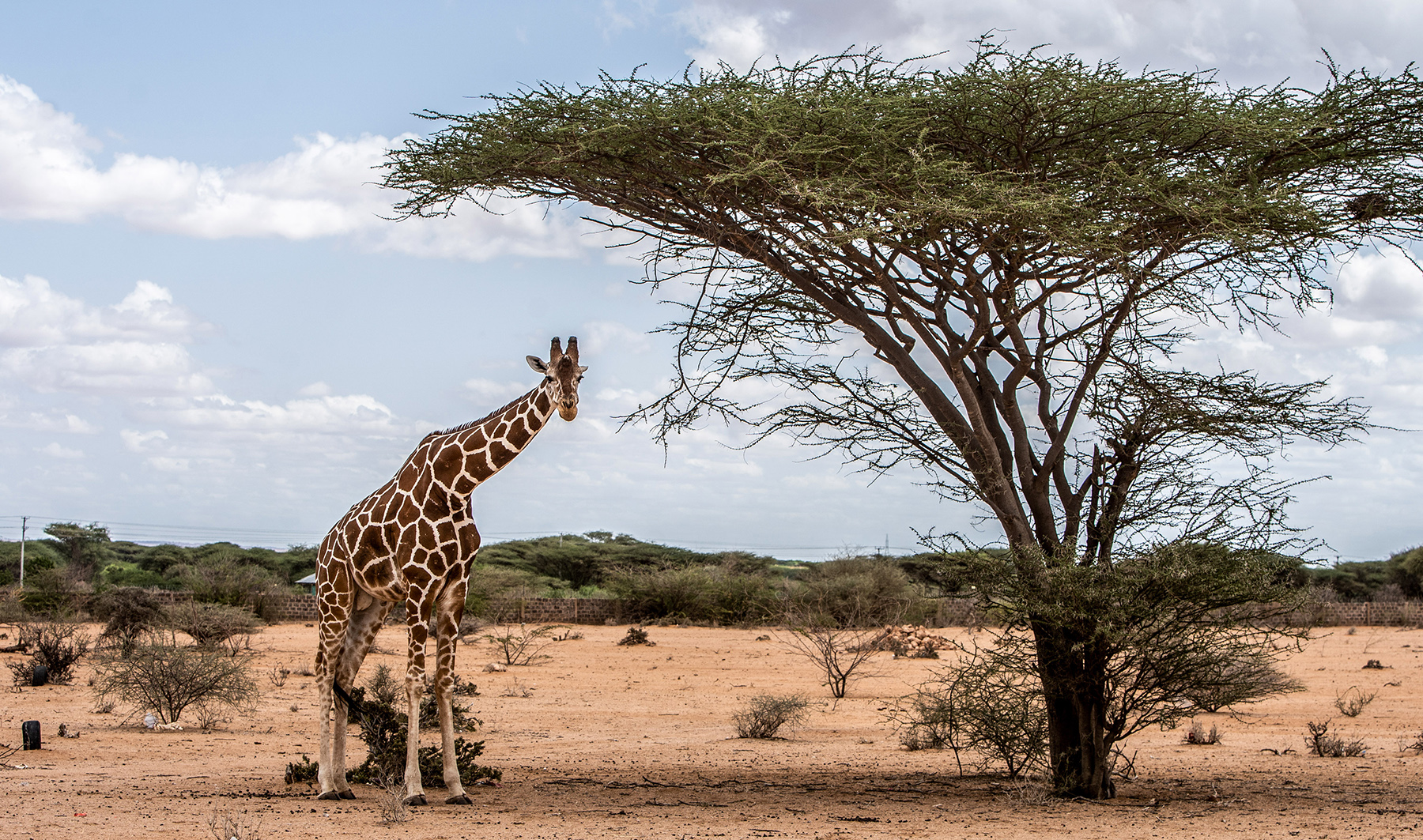Giraffes are the world’s tallest mammals and an African icon, but they are also vulnerable to extinction.
Giraffe populations have declined by 40% in the last 30 years, and there are now fewer than 70,000 mature individuals left in the wild. What are the causes of this alarming decline, and what can be done to protect these gentle giants?
The five biggest threats to giraffes are habitat loss, insufficient law enforcement, ecological changes, climate change, and lack of awareness. Below, I will tell you about these threats and what is being done to save them.
I will also explain a study I was a part of that ranked these threats in terms of each one’s danger of causing giraffe extinction, and whether human actions can alleviate that danger. The study used data from more than 3,100 giraffes identified over eight years in an unfenced 4,500km² area of the Tarangire ecosystem in Tanzania. We used the data to simulate how environmental and land use changes could affect the giraffe population over 50 years. The findings can guide conservation actions.
Habitat degradation, fragmentation and loss
Giraffes need large areas of savanna with abundant native bushes and trees to feed on. The biggest threat to giraffes is the degradation, fragmentation and loss of their habitats through human activities such as farming and human settlement expansion.
Habitat loss outside protected areas is the main reason for the recent decline in giraffe numbers. National parks provide most of the remaining habitat. Some good habitat remains unprotected but is cared for by pastoralists. Traditional pastoralists like the Maasai in northern Tanzania maintain large spaces of natural savanna where wildlife and people thrive together. However, most people now living in areas that were giraffe habitats are sedentary. As populations of farmers and townspeople expand, giraffes are forced into smaller and more isolated patches of land. This reduces their access to food and water and increases their vulnerability.
Conservationists are working to safeguard existing unprotected giraffe habitats and maintain or restore the connections among protected areas. Community-based natural resource management is central to this activity. It gives local communities the legal power to protect their land and resources.
Insufficient law enforcement
Another major threat to giraffes is illegal hunting (poaching) for bushmeat markets. International criminal syndicates usually control this.
Strong wildlife law enforcement is the best tool to combat this threat. Conservationists are working to strengthen local and international law enforcement around wildlife crimes and to reduce the demand for giraffe products. At the grassroots level, this requires supporting anti-poaching patrols by rangers and village game scouts. It’s also essential that communities should have legal alternative ways to make a living.
Ecological changes
A third major threat to giraffes is human-caused ecological change that affects their food availability and mobility. These changes include deforestation of savannas for fuelwood and charcoal production, mining activity, and road and pipeline building. Water diversion and groundwater pumping also affect their habitat and access to water.
Mining, roads and pipelines can disrupt the natural movement patterns of wildlife, leading to smaller, more isolated populations that are more susceptible to local extinction.
Conservationists are promoting sustainable forestry, new cooking techniques such as gas stoves, water conservation and planning for groundwater resources, and building wildlife crossings into roads and pipelines.
Climate change
Climate change from human-caused carbon dioxide pollution is forecast to increase temperatures and rainfall in many African savanna areas. Giraffes are unaffected by the higher temperatures observed so far, but increased seasonal rainfall is associated with lower giraffe survival due to disease and lower food quality.
Over the longer term, more rainfall will create conditions favourable to increased woody plant cover in savannas. This could help giraffes by increasing their food supply, but only if enough natural savanna is preserved from human exploitation.
Lack of knowledge and awareness
The fifth major threat to giraffes is the lack of knowledge and awareness about their conservation needs. Giraffes are often overlooked and underrepresented in wildlife research, funding and policy. Many people are unaware that giraffes are endangered and face multiple threats across Africa.
Conservationists are working to increase knowledge and awareness about giraffes locally and worldwide. Scientists are studying giraffe demography, diet, behaviour and genetics, and there is a large environmental education programme in Tanzania, the US and Europe.
Creating a safe future for giraffes
Giraffes are facing a silent extinction crisis in Africa. But there is still hope that they can be saved if people understand and address the threats.
The new study I coauthored ranked threats and looked at potentially mitigating actions. Our simulation showed that the greatest risk factor for local giraffe extinction was a reduction in wildlife law enforcement leading to more poaching. In the model, an increase in law enforcement would mitigate the negative effects of climate change and the expansion of towns along the edges of protected areas. The study highlights the great utility of law enforcement as a nature conservation tool.
Given their vast historical Africa-wide range and individual home ranges of thousands of hectares, giraffes will not likely survive only within the boundaries of small, fragmented protected areas. I propose as part of our evidence-based recommendations that rangelands used by wildlife and pastoralists as movement pathways be permanently protected from farming, mining and infrastructure. This will give people as well as wide-ranging animals like giraffes freedom to roam.
It will also require expanding wildlife law enforcement in village lands outside formal protected areas. These measures would help make it possible for people and giraffes to thrive together. DM
This story was first published on The Conversation. Derek E. Lee is an Associate Research Professor of Biology at Penn State.




